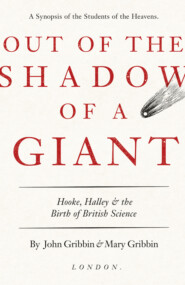По всем вопросам обращайтесь на: info@litportal.ru
(©) 2003-2024.
✖
Science: A History in 100 Experiments
Автор
Год написания книги
2019
Настройки чтения
Размер шрифта
Высота строк
Поля
Volta’s invention, developed during a long series of experiments, was literally a pile of alternating silver and zinc disks, separated from one another by cardboard discs soaked in brine. When the top disc in the pile was connected to the bottom disc by a wire, electric current flowed through the wire. When there was no connection, no current flowed. The device became known as a ‘voltaic pile’, the forerunner of the modern battery (the term ‘battery’ had actually already been used, by Benjamin Franklin, to describe a row of charged glass plates, which he likened to a row of cannon). And it had been developed specifically to disprove Galvani’s idea that electric current was part of a life force associated only with living things.
But Galvani and Volta were each partly right. Electricity is generated in the human body, as Galvani thought, but by chemical processes operating in living cells, not solely in the brain. On the other hand, there is nothing special about this electricity, which is exactly the same as the electricity generated in non-living systems such as voltaic piles.
After 1800, scientists could work with electric currents that they could turn on and off as they wished, and they could make the current stronger by adding more discs to the pile, or weaker by taking discs away. Very soon, scientists such as Humphry Davy (see here (#litres_trial_promo)) were using this invention to revolutionize chemistry; one of the first discoveries was that passing an electric current through water decomposes the water into oxygen and hydrogen.
The experiment usually described as ‘weighing the Earth’ was first carried out at the end of the 1790s, and reported to the Royal Society in 1798. But in fact this experiment was the first determination of the strength of the force of gravity, which turns out to be the weakest of the forces of nature. The experiment was devised by John Michell, who had been a Cambridge professor but gave up his post in 1764 to become a parish priest, although he continued to study science in his spare time.
Michell was the first person to come up with the idea of black holes, in 1783. By then, it was well known that the speed of light is finite (see here (#ua09424ba-a965-5010-8fb2-3944c0528c7f)), and Newton’s law of gravity showed that the more massive an object is, the faster you have to move to escape from it. Michell calculated that an object with the same density as the Sun but 500 times the diameter of the Sun would be so massive that this ‘escape velocity’ would exceed the speed of light. He wrote that ‘we could have no information from sight’ of such an object. It would be, in modern language, a black hole.
He was also interested in more down-to-earth studies of gravity. As well as thinking up an experiment to measure the strength of gravity, Michell got as far as building most of the apparatus needed for the experiment. But he died in 1793, before the experiment could be carried out. All his scientific equipment was left to his old Cambridge College, Queens, but nobody there was up to the task of doing the experiment, so the equipment was passed on to Henry Cavendish, in London, one of the most careful and successful experimenters of his time. Cavendish was a wealthy aristocrat and recluse, who had the money and inclination to devote all his time to the study of science. So the measurement of the strength of gravity became known as the ‘Cavendish experiment’, even though it was devised by Michell.
The experiment is very easy to understand, but painstakingly difficult to carry out. It was constructed in an outbuilding at Cavendish’s house on Clapham Common, then still a village on the outskirts of London. The centrepiece of his experiment was a strong light rod, six feet (1.8 metres) long and made of wood, with a small lead ball on each end. Each of the small balls weighed 1.61 pounds (730 grams). The rod was suspended by a wire from its exact centre, so that it was in balance. Two much heavier lead balls, each weighing 348 pounds (157.85 kilograms), were mounted on swivels so that they could be swung into position at a very precisely measured distance (9 inches, or 22.86 centimetres) from the small balls, each of which had already been weighed very accurately. All of this experimental equipment was placed inside a wooden case so that no air currents could disturb it. Because of the gravitational attraction between the large balls and the small balls, the horizontal bar would try to twist, until it was stopped by the torsion of the wire. By carrying out a long series of experiments, some with no heavy weights and the horizontal bar twisting to and fro like a horizontal pendulum, Cavendish was actually able to measure the force of attraction between each of the small lead balls and a 350 pound weight (158.76 kilograms). This force is about the same as the weight of a single grain of sand. But he also knew the strength of the force of gravity acting between each of the small balls and the Earth itself – this is just the weight of each ball. So from the ratio of these two forces he could work out the mass of the Earth. It is even more impressive that Cavendish completed these experiments not long before his sixty-seventh birthday.
© Dorling Kindersley/UIG/Science Photo Library
Model of the gravity experiment apparatus used by Henry Cavendish,
In fact, Cavendish did not give a figure for the mass of the Earth, but quoted a number for its density, which is the mass divided by the volume. On 21 June 1798 he reported to the Royal Society the combined results of a series of eight experiments carried out in August and September 1797, plus nine more carried out in April and May 1798. The figure he reported was 5.48 times the density of water. But he had actually made a slight arithmetical error, and the true density based on his measurements is 5.45 times the density of water. This is very close to the best modern value, which is 5.52 times the density of water. Cavendish was out by just over 1 per cent. And although Cavendish did not do the further calculation himself, such experiments can be used to work out the so-called gravitational constant, G, which is a measure of the strength of gravity.
At the end of the eighteenth century, it was widely thought that the phenomenon of heat was associated with a fluid called caloric, which was contained inside objects rather like the way water is contained in a wet sponge. According to this idea, it was caloric flowing out of an object that caused a rise in temperature. A few people disagreed. In particular, the Dutchman Herman Boerhaave had suggested, decades earlier, that heat might be a form of vibration, like sound. But the experiments proving the caloric theory wrong were carried out only in the 1790s, by a colourful American-born scientist then working in Bavaria.
© Science Photo Library
American-British physicist Count Rumford (1753–1814), born Benjamin Thompson.
Benjamin Thompson had been on the wrong (British) side in the American war of Independence, as a result of which he became an itinerant scientist/engineer, finding work wherever he could. This led him to Bavaria, where he was so successful in the service of the Elector (Prince) who ruled the region that in 1792 he was ennobled as Graf von Rumford (in English, Count Rumford). Rumford, as he is usually known, became interested in the nature of heat when carrying out experiments to test the power of gunpowder. He noticed that the barrel of a cannon became hotter if it was fired without being loaded than it did if it was loaded with a cannonball, even though the amount of gunpowder used was the same. This is not what you expect from the caloric model, and he had also read about Boerhaave’s ideas. One of his roles in Bavaria (at the arsenal in Munich) was to oversee and improve the process of boring out the barrels of cannon, and this gave an opportunity to investigate further.
In making cannon, a cylinder of steel was held in place horizontally, pressed up against a non-rotating drill bit. The steel cylinder itself was rotated, using power from horses plodding round in circles and harnessed to the device by a system of gears, while the drill bit was pushed gradually into the hole being bored. The friction between the drill bit and the steel cylinder soon made the cannon hot. Proponents of the caloric model argued that this was because caloric was being squeezed out of the steel. But Rumford was quick to see the flaw in this argument. The supply of heat seemed to be inexhaustible. As long as the boring continued, heat was produced. If caloric was being squeezed out like water out of a sponge, why didn’t it all get used up? Why didn’t the ‘sponge’ dry out?
Using bits of steel left over from the cannon-making which were of no further use, Rumford devised an ingenious experiment. He placed the scrap steel in a wooden box full of water, so that he could measure the amount of heat produced in terms of how long it took to bring the water to the boil (roughly two and a half hours); and he used a dull, discarded drill bit which was little use for boring any more, but which generated a great deal of friction. He found that he could keep on boiling water, refilling the box over and over again, as long as the horses kept walking. The caloric idea disagreed with experiment, so it was wrong. Rumford’s results were published by the Royal Society in 1798.
Back in Bavaria, his experiment became something of a party piece, with visitors being amazed at seeing large amounts of cold water made to boil without the use of fire. But Rumford pointed out to them that this was not an efficient way to boil water, because the horses had to be fed hay. If you simply wanted to boil water, it would be much better to do away with the horses and burn the hay itself. With this remark, Rumford was on the brink of understanding the law of conservation of energy, which, echoing the law of conservation of mass (see here), says that the total amount of energy is conserved, but that energy can be converted from one form into another. He never quite took that step. But he did write: ‘It appears to me to be extremely difficult, if not quite impossible, to form any distinct idea of any thing, capable of being excited and communicated in the manner the Heat was excited and communicated in these experiments, except it be MOTION.’
Вы ознакомились с фрагментом книги.
Приобретайте полный текст книги у нашего партнера:
Приобретайте полный текст книги у нашего партнера:






